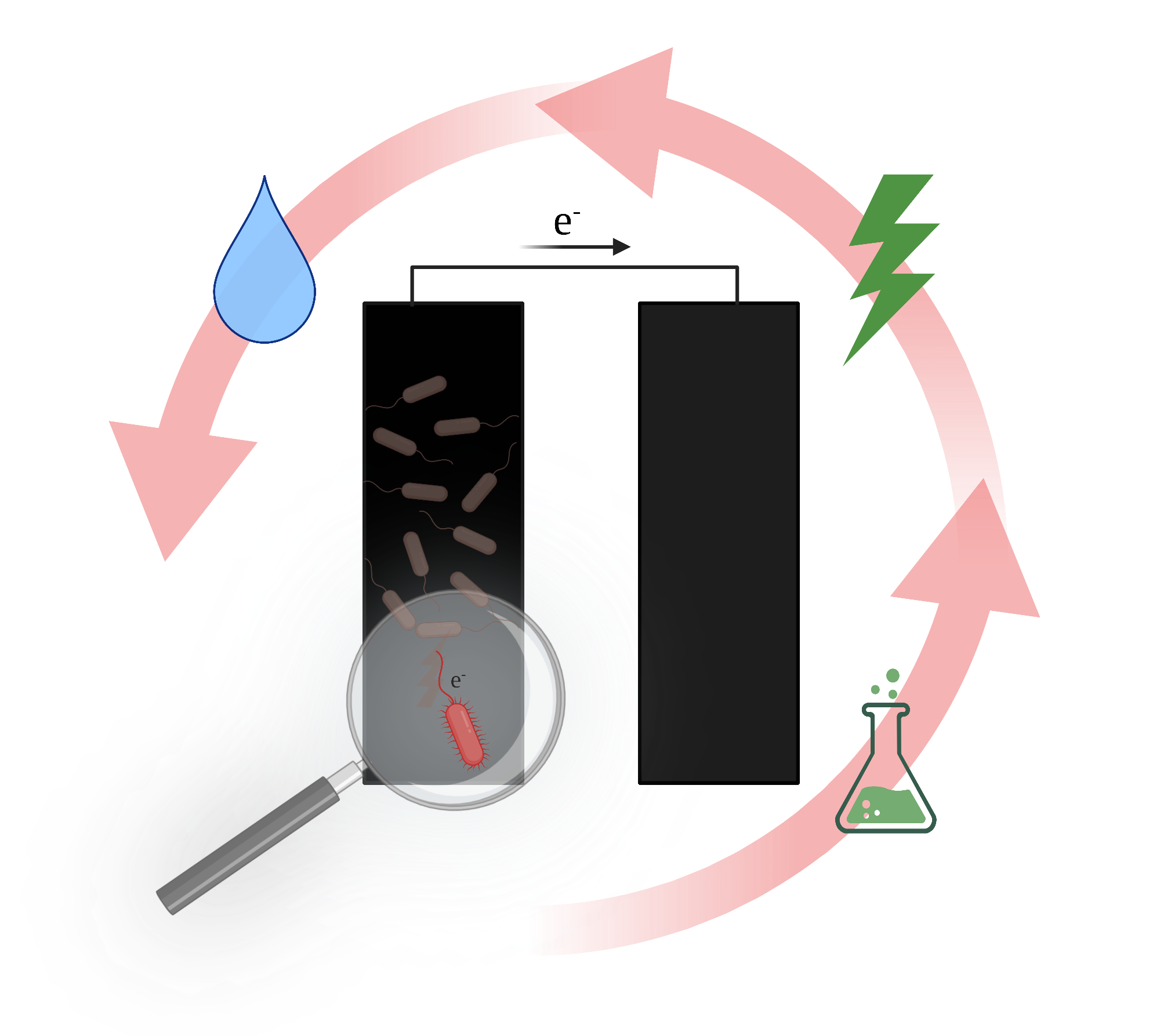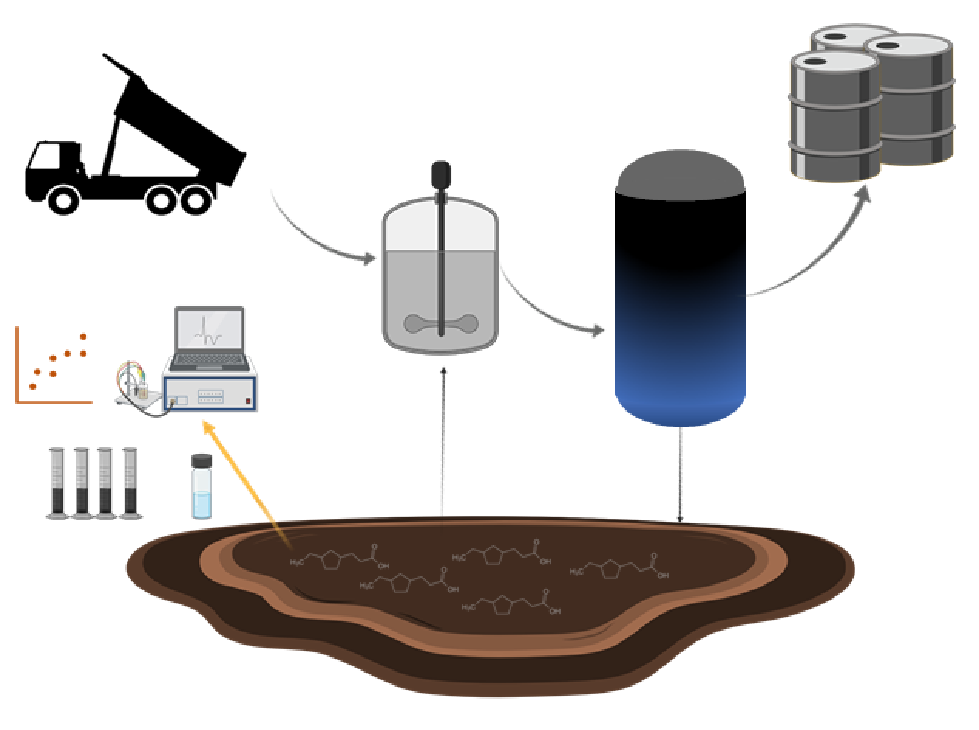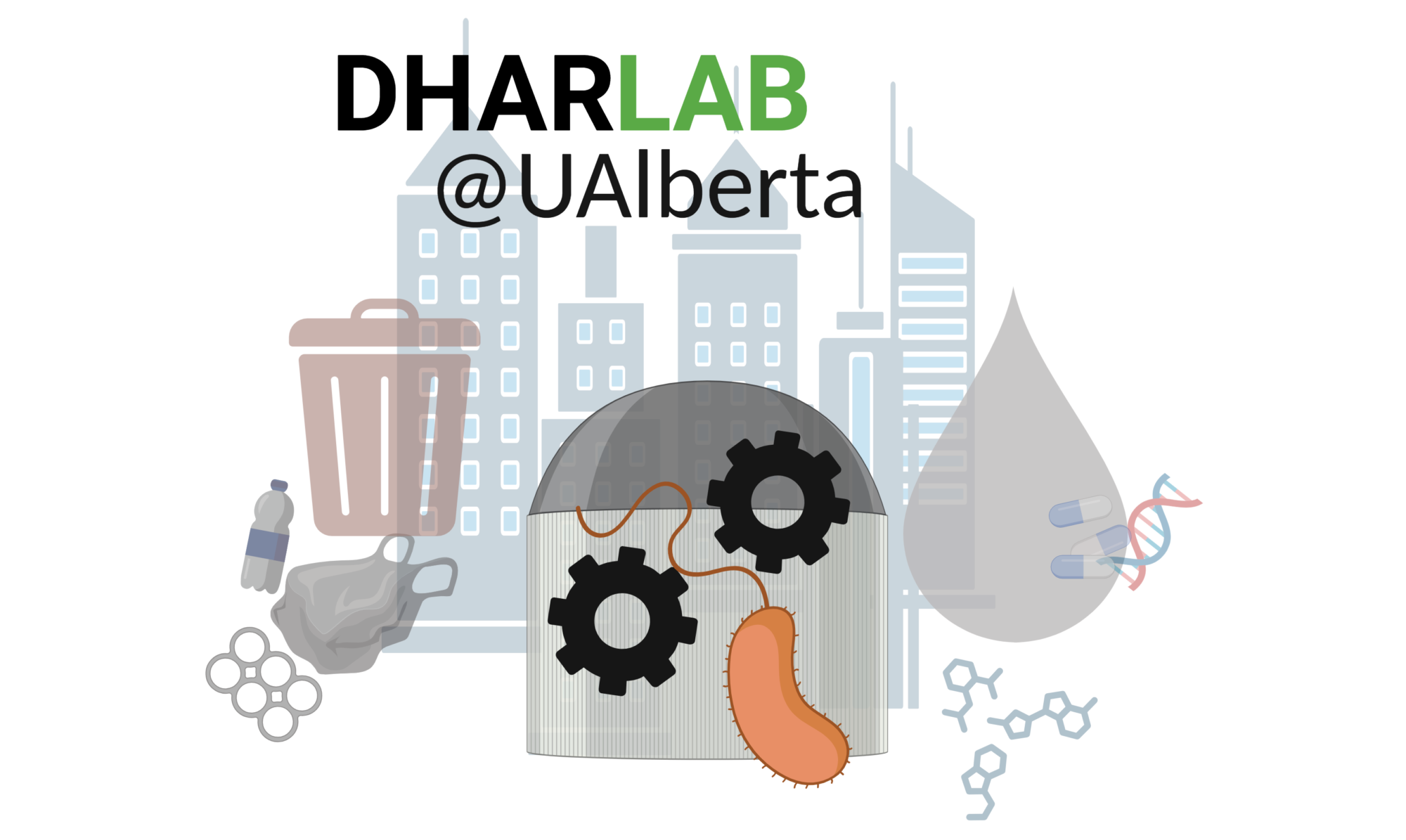We combine principles of environmental biotechnology, bioelectrochemistry, and physicochemical processes to develop bioenergy, resource recovery, and biosensing technologies for the waste and wastewater sector.
Research Areas
Anaerobic Digestion
Anaerobic digestion is a proven technology that can convert organic waste and high-strength wastewater into biomethane. To develop a sustainable and high-rate anaerobic digestion process, we explore different strategies, including pre-treatment of feedstock, electrochemically assisted digestion, co-digestion of complementary waste streams, and promoting direct interspecies electron transfer (DIET), a recently discovered microbial syntrophy in the anaerobic microbiome. Furthermore, our team focuses on understanding the fate and control strategies of emerging contaminants, such as (nano)microplastics and antibiotic resistance genes.
Microbial Electrochemical Technologies
 Microbial electrochemical systems and technologies combine the metabolism of bacteria with electrochemistry to capture electrons from biodegradable organic matters in waste or wastewater. This unique feature allows us to manipulate the recovered electrons into electric power or other value-added products, such as hydrogen gas, methane, industrial chemicals, etc. We are interested in understanding microbial and electrochemical kinetics, microbial syntrophic interactions, and ultimately developing scalable microbial electrochemical systems for field application.
Microbial electrochemical systems and technologies combine the metabolism of bacteria with electrochemistry to capture electrons from biodegradable organic matters in waste or wastewater. This unique feature allows us to manipulate the recovered electrons into electric power or other value-added products, such as hydrogen gas, methane, industrial chemicals, etc. We are interested in understanding microbial and electrochemical kinetics, microbial syntrophic interactions, and ultimately developing scalable microbial electrochemical systems for field application.
Biosensor and Bioremediation Technologies for Oil Sands Industry
Our research team is developing a microbial electrochemical cell-based biosensor for real-time monitoring of organic contaminants in oil sands process water. We are also developing advanced remediation processes for oil sand tailings by combining principles of environmental biotechnology and physicochemical processes.
Illustrations are partially created with BioRender. The cover picture shows a microscopic image of electroactive biofilms grown on carbon fiber electrodes in our lab.
Contact
Principal Investigator: Dr. Bipro Ranjan Dhar
Associate Professor, Environmental Engineering
Department of Civil and Environmental Engineering
School of Mining & Petroleum Engineering
University of Alberta, Canada
Office: 6-277 Donadeo Innovation Centre for Engineering
9211-116 St NW, Edmonton, AB T6G 1H9
Labs: NREF 3-100 | NREF 6-052 | NREF 6-041a
Markin/CNRL Natural Resources Engineering Facility
9105-116 St NW, Edmonton, AB T6G 2W2
E-mail: [email protected]
Territorial Acknowledgement
The University of Alberta, its buildings, labs, and research stations are primarily located on the traditional territory of Cree, Blackfoot, Métis, Nakota Sioux, Iroquois, Dene, and Ojibway/Saulteaux/Anishinaabe nations; lands that are now known as part of Treaties 6, 7, and 8 and homeland of the Métis. The University of Alberta respects the sovereignty, lands, histories, languages, knowledge systems, and cultures of First Nations, Métis and Inuit nations.



